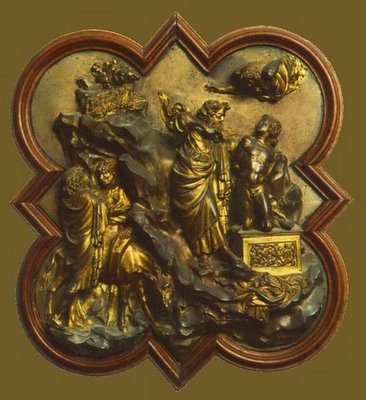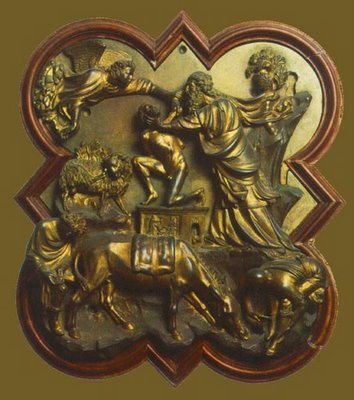
Ghiberti, Sacrifice of Isaac, 1401-03

Brunelleschi, Sacrifice of Isaac, 1401-03
"Ghiberti’s initial contract of 1403 called for him to create the east doors of the Baptistery, which, because they faced the cathedral, were to depict the life of Christ in twenty-eight panels, fourteen each on the right and left sides of the divided doors. He was scheduled to finish in nine years, but the doors were only gilded in 1423 and finally hung in 1424—twenty-one years after they were started. The delay could not be ascribed to a lack of talent in the workshop. Ghiberti’s assistants at various times during this project included some of the most eminent artists of the early Renaissance, including Benozzo Gozzoli, Paolo Uccello, Antonio del Pollaiuolo, Luca della Robbia, and a sculptor who would soon astound Italy with his genius, Donatello.... Brunelleschi, whose contest panel was acquired by Cosimo de’ Medici, was now immersed in building the magnificent dome for Florence’s Cathedral." From Sprezzatura: 50 Ways Italian Genius Shaped the World.
Ghiberti's second set of doors for the Florentine Baptistry revealed advances in technical power and a mastery of perspective that provoked Michelangelo's oft-cited remark that they were "so beautiful they could stand at the entrance of Paradise."







